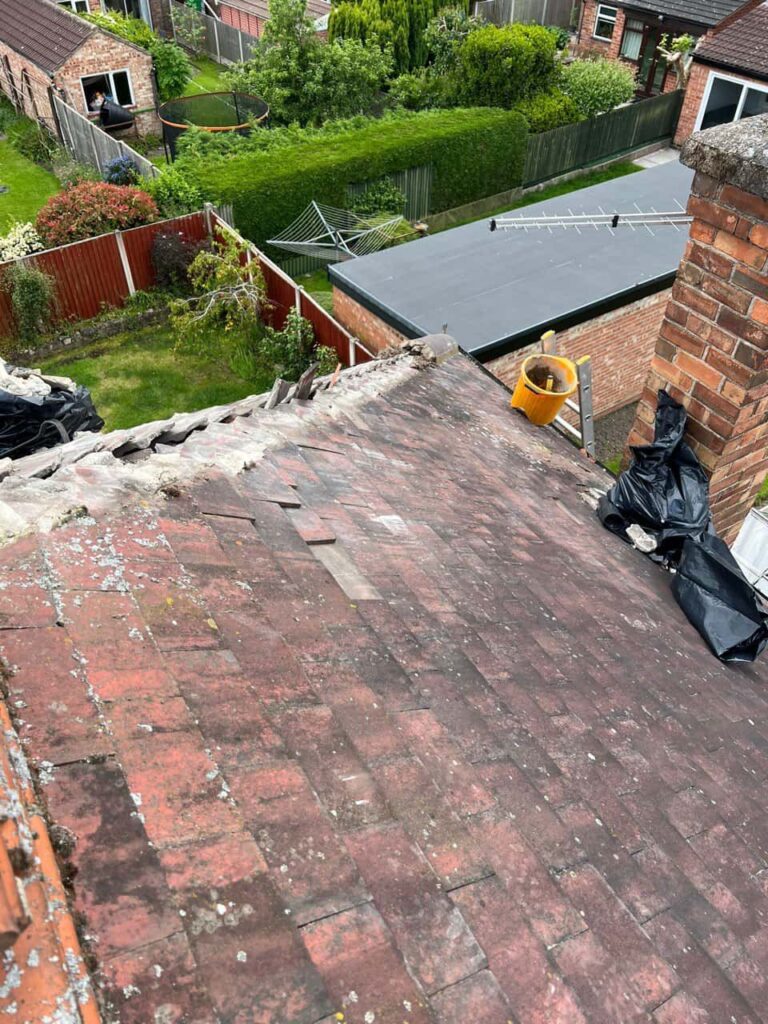Flat roofs are a popular choice for many properties in Branston, Lincolnshire, offering a modern aesthetic and practical use of space. However, one of the most common issues faced by flat roofs is the development of blisters. These unsightly bubbles on the roof surface can lead to more significant problems if left unaddressed. At Branston Roofing Repairs, we understand the importance of maintaining your flat roof to prevent costly repairs and extend its lifespan.
In this blog, we’ll discuss what causes flat roof blisters, how to address them, and how simple repairs can prolong the life of your roof.
1. What Causes Flat Roof Blisters?
Blisters form when air or moisture becomes trapped between layers of the roofing material, such as felt or membrane. This typically happens during installation or as a result of damage over time. Changes in temperature cause the trapped air or moisture to expand, creating bubbles on the surface of the roof. Over time, these blisters can compromise the integrity of the roof, leading to leaks and further damage.
Key causes of flat roof blisters include:
- Poor installation techniques, where air or moisture is sealed into the roofing layers.
- Exposure to extreme weather conditions, such as intense sunlight, which causes expansion and contraction.
- Water infiltration through cracks or small punctures, which then gets trapped between the layers.
2. Why Addressing Blisters is Important
While small blisters may seem like a minor issue, they can become more serious if ignored. The constant expansion and contraction caused by changing weather conditions can weaken the roof’s surface, leading to cracks and splits. Once the roof membrane is compromised, water can seep in, causing leaks and further damage to the underlying structure.
Addressing blisters early can help prevent water damage and avoid the need for more extensive repairs or even a full roof replacement.
3. Simple Repairs for Flat Roof Blisters
The good news is that in many cases, blisters can be repaired quickly and effectively. Here’s a step-by-step overview of how the repair process works:
- Inspection: The first step is a thorough inspection of the roof to assess the extent of the blistering. At Branston Roofing Repairs, we look for signs of water infiltration and check whether the blisters have affected the roof’s overall condition.
- Draining the Blister: For small blisters that haven’t caused serious damage, the repair process begins by carefully draining the trapped air or moisture. This is done by making a small incision in the blister, ensuring that no additional damage is caused to the roof surface.
- Resealing the Roof: Once the blister has been drained, the next step is to apply adhesive or sealant to reseal the roof’s membrane. This ensures that the layers are securely bonded together, preventing further blistering.
- Applying a Patch: In some cases, it may be necessary to apply a patch over the repaired area to reinforce the roof and provide extra protection against future damage. The patch is usually made of a similar material to the existing roof membrane to maintain consistency and durability.
4. Preventing Future Blistering
While repairs can address existing blisters, it’s equally important to take steps to prevent future issues. Regular maintenance and inspections are essential to keep your flat roof in top condition and catch problems early before they worsen. Here are a few tips for preventing blistering:
- Ensure Proper Installation: If you’re having a new flat roof installed, make sure it’s done by experienced professionals to avoid trapping air or moisture during the installation process.
- Regular Inspections: Schedule regular inspections, particularly after extreme weather, to check for signs of wear, tear, or blistering. At Branston Roofing Repairs, we offer professional inspections to help you stay on top of roof maintenance.
- Prompt Repairs: Address any signs of damage as soon as they appear. Whether it’s a blister, crack, or puncture, timely repairs can prevent more significant issues from developing.
Conclusion
Flat roof blisters may seem like a small issue, but they can lead to more serious problems if left unattended. Regular maintenance and prompt repairs are key to extending the life of your roof and preventing costly damage. At Branston Roofing Repairs, we specialise in flat roof repairs, including addressing blisters before they cause more extensive damage.
Call us on: 01522 459 294
Click here to find out more about Branston Roofing Repairs
Click here to complete our contact form and see how we can help with your Roofing needs.

